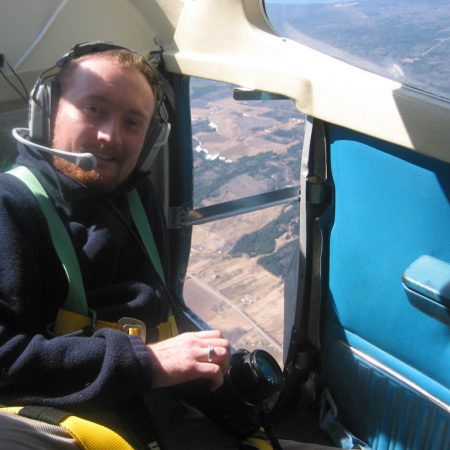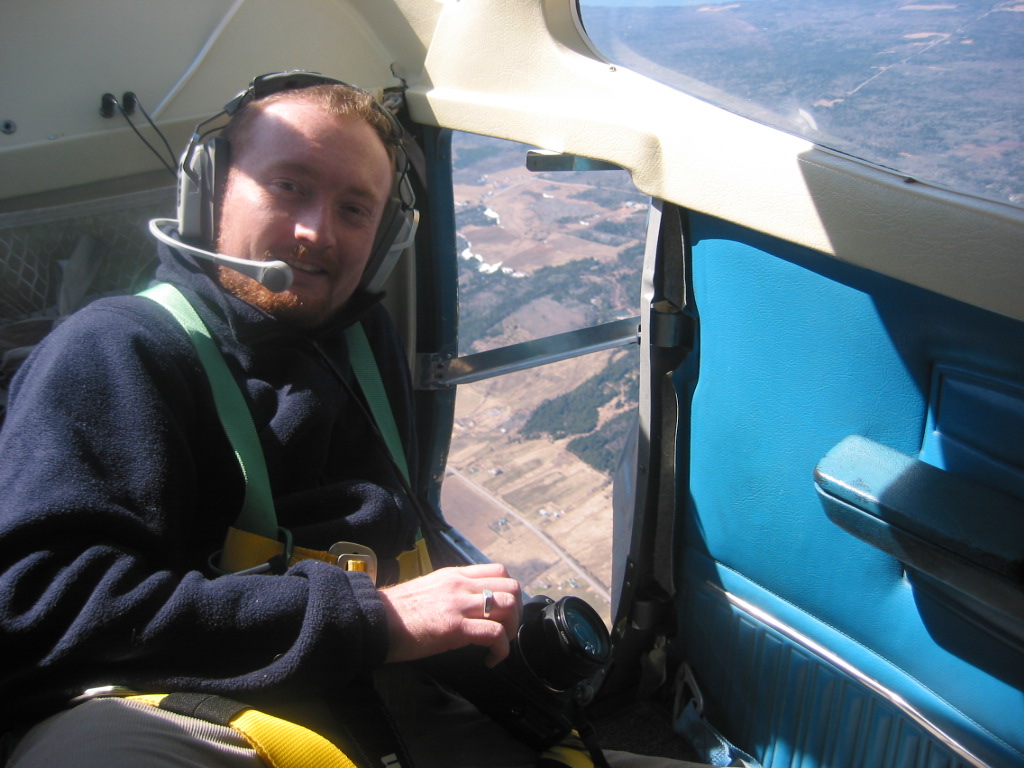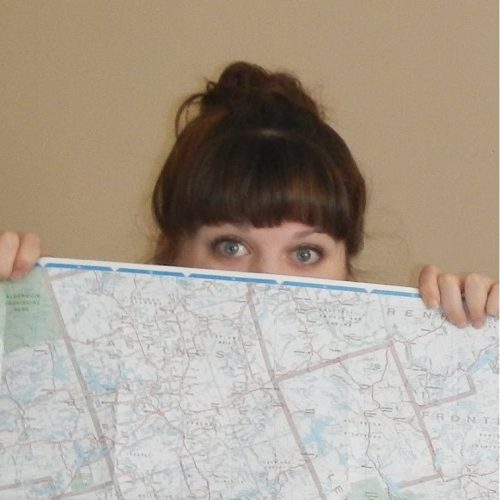Open Source Geomatics Software & Geomatics Careers
Today we are talking to Teresa Baldwin, the Community Manager for FOSSLC, an open source based, not-for-profit group.
What is the Geomatics connection you ask? Teresa has a GIS diploma from Algonquin College in Ottawa, and moved into her current position by leveraging her education and talents in GIS.
GoGeomatics: Hi Teresa welcome to the GoGeomatics Career Blog. Let’s get into it.
Just as a background for our members can you tell us a little about you? Teresa where are you from and what is your education?
Teresa: I’m originally from Moose Jaw, Saskatchewan, where my parents still live. I went to school at the University of Regina and finished with two undergraduate degrees, one in German and one in Geography. I got introduced to GIS while I was finishing up my German degree and decided that I would go back for a second degree, which only takes a year. So I took as many GIS and Cartography classes as I could and absolutely loved them. I knew that in order for me to get into GIS, I would have to take something more than my additional year of Geography classes. I looked at a few schools across Canada and eventually decided on Algonquin College in Ottawa, where I took the post-graduate certificate in GIS.
GoGeomatics: How was your experience at Algonquin. Can you tell us about some of the high points of the program for you?
Teresa: It was a very interesting program, as most people didn’t have geography backgrounds, but biology and philosophy and others. I ended up being the one that people came to for some Geography questions because I had taken a Canadian geography course and knew which tiny islands belonged to what province, for example. It was a good way to get people interested in the different parts of GIS, as we covered databases, cartography, programming, and statistics.
GoGeomatics: How did you go from your GIS diploma from Algonquin to your current position?
Teresa: This is the proof of it’s who you know. I heard about FOSSLC when I was first moving to the city and ended up helping out with a few of their conferences. So when I was looking for work, Andrew Ross knew what I was capable of and had no hesitation in hiring me.
GoGeomatics: You’ve moved from a very technical background to a marketing and community management position within the open source community. What changed your focus from the technical side of GIS to marketing?
Teresa: As much as I love GIS, I’m not good at programming. I can be very good at organizing things, such as conferences apparently! So it is just a natural fit. I actually had a former co-worker tell me that I give off this air of being really well organized, which I thought was grand. I honestly love jobs like these where what I’m working on changes. I get to make maps, I get to organize conferences, I get to travel, I get to meet new people. It’s great, really.
GoGeomatics: In between Algonquin and FOSSLC you had a job at DM Solutions. What were you doing at DM?
Teresa: Initially, I started searching for open data for them to use in their MapSherpa project. So I spent hours trying to see if there were good sources of data and what was wrong with some of the data that I did find and what we could possible use it for. It was a great time to learn about licenses, about data sources and types and about metadata. I ended up doing support for MapSherpa, as well as working on data collection, finding potential partners, partner support. I did a lot of QA on MapSherpa as well, which was also a great fit, as I tend to break most technology that I can touch.
GoGeomatics: What do you see in store for the future of Geomatics and the open source community?
Teresa: Geomatics is definitely doing well in the open source community, things like the success of OSGeo and FOSS4G are definitely proof of that. More countries are releasing their data for free, more different levels of government are going towards open source, so it’s a very exciting time. Things are definitely changing. NRCan uses MapServer, for example, which is a huge open source project that the University of Minnesota, I believe, started. It’s such a big project, that I was actually quite mad that it wasn’t taught at Algonquin. Students need to know that things like this exist!
GoGeomatics: What type of opportunities are out there for those interested in working on open source software and geomatics?
Teresa: There definitely are some, but they aren’t as obvious as you might think. NRCan is definitely a huge one, but I suspect it’s only MapServer that they’re using. Smaller companies like DM Solutions Group are definitely another. Going into work for yourself is a huge one, to be honest. If you can find customers via LinkedIn or Twitter or what have you, you could easily work for yourself using only open source software. Most of the work seems to be web mapping, which is getting huge right now. This starts from a simple Google map on a restaurant’s website (note, many still don’t have this) to much more detailed work.
GoGeomatics: If I asked you to put together a robust set of tools for me in GIS, remote sensing, and web mapping, what would you recommend to GoGeomatics?
Teresa: I was taught with ESRI software, but I have to say, I really like using QGIS, GRASS, OpenLayers, and MapServer. They would easily be able to do what ESRI does for you, without a doubt.
GoGeomatics: Open source software is not really taught in the GIS programs in Canada. For the most part GIS programs stick with the ESRI suite of tools. What are your thoughts on that? Do you think more emphasis should be put on open source tools?
Teresa: Oh I know, and it makes me sad. Our ESRI license server went down at school (Algonquin) for two weeks and we couldn’t get any work done, it was incredibly frustrating. We actually weren’t able to do one of our Remote Sensing assignments because of this. Schools stick with it because ESRI knows that once they get into schools, they have people. Someone educated with ESRI will recommend it when someone asks “what GIS should I get?” It’s what they are used to and I understand that, but there are definitely differences. I would love for people to be taught open source technologies, simply because they are less ready out of the box and you have to think more. As a student, yeah, you might hate it at the time, but you’ll definitely have a better idea of what you need in a GIS than just saying “oh I only use ESRI because that’s all I know”. ESRI isn’t bad, but there are definitely alternatives that schools don’t even talk about and I wish they would.
GoGeomatics: Is there any up and coming open source software for GIS that we should keep our eyes on?
Teresa: Not that I know of, off hand. I would definitely recommend learning more python for people as it’s going to become fairly huge in GIS period, not just open source.
GoGeomatics: Are there any areas that you are looking to expand your skill sets in the future?
Teresa: I personally would love to get into Python programming, I took a bit of that at Algonquin and I know how powerful it can be.
GoGeomatics: Do you have any advice for new grads or those thinking of pursuing a career in the field of Geomatics in Canada?
Teresa: Be willing to move, as much as I hate to say it. Small municipalities want a GIS technician and many will pay you well without any experience. Small town BC is a great example of this. Learn to program, there are tons more jobs out there for you if you do. Make new contacts, particularly in engineering firms, as they are the ones that will help you get a new position the most.
GoGeomatics: As well one last question. What web links do you recommend for those who want to learn more about open source software and geomatics?
Teresa: Take a look at OSGeo http://www.osgeo.org/ particularly as we have monthly meetings here in Ottawa (that I’m the chair of, heh!)
Check out FOSSLC’s videos on the subject: http://www.fosslc.org/drupal/videos
Get on mailing lists. There are tons and there are people willing to help you out with everything!
Also, get on Twitter. There’s a ridiculous amount of open source and geomatics people on it that are willing to help.
Thanks for sharing your expertise and time with us Teresa.








“Small municipalities want a GIS technician and many will pay you well without any experience.”
That is not what i’ve seen! Do you have any evidence of that?
Nice discussion on Geomatics software which is highly used for developing a GIS software application to know about geo data.